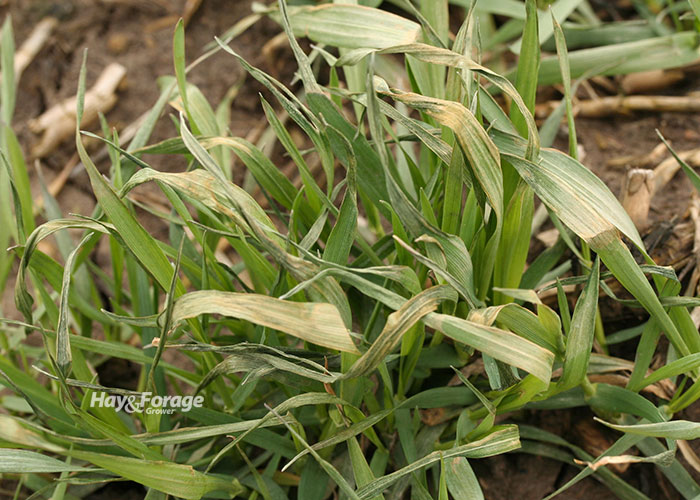
The severe, late December frigid weather that plunged thermometer mercury levels far below freezing — even into the Deep South — has left winter annual forages in a compromised state.
Lisa Baxter, an extension forage specialist with the University of Georgia, has been fielding a lot of calls from farmers and extension agents wanting to know if the chilled forage will recover. Her answer: “Time will tell.”
Many factors involved
“Many cool season forages can handle subfreezing cold for short periods, and the degree of damage depends on air temperature, soil temperature, topography, winter precipitation, stand health, stand age, and stage of growth,” Baxter explains. “The potential for recovery will depend on how much growth and what stage the plant was at before the cold snap.”
Forage that is more advanced in maturity will be less susceptible to cold injury or death compared to tender, young growth. Baxter points out that many farmers planted late last fall because of dry soil conditions, so these plants were behind their typical stage of development in late December.
“Oats are generally less winter hardy than other small grains and can suffer substantial yield loss when temperatures dip below 20°F,” Baxter says. “Ryegrass is likely intermediate to oats and other small grains in terms of winterhardiness, but there is a wide range of tolerance among varieties.”
Reduced forage quality
Plant cells can break or rupture when subjected to subfreezing temperatures. This initially results in darker colored leaves. Grasses can be more tolerant to this than legumes, which offers a reason why many winter annual broadleaf weeds seem to be more affected than the grasses growing around them. Cell death occurs when ice forms within the plant cells, which ultimately translates to dead, brown plant tissue.
Baxter says the impact of freezing weather on forage quality is mixed and highly variable. Ultimately, forage quality may be lower than expected. “Watch your cows closely for loss of condition and supplement diets as needed to account for the lower forage quality,” she suggests.
Although nothing will prevent freeze injury, timely planting to ensure adequate leaf area during the fall to synthesize carbohydrates and accumulate organic reserves before winter will reduce the risk of extensive damage. The forage specialist also notes that a high potassium-to-nitrogen ratio in soil will help make plants more winterhardy.
“Once temperatures warm back up, regrowth will take time,” Baxter cautions. “Optimum temperatures for winter annual forages are typically between 60°F to 80°F. Forages will grow much more slowly outside of this temperature range.”
Baxter says to be careful when grazing damaged fields. It’s best to give plants adequate recovery time.
Prussic acid shouldn’t be a concern unless older sorghums or johnsongrass plants are still standing. If this is the case, Baxter suggests grazing be delayed for at least 14 days to allow the toxic compounds to dissipate.
Tall fescue is different
Tall fescue, among its many unique positive and negative qualities, tolerates cold temperatures extremely well because it has a waxy layer that provides protection and helps preserve forage quality.
Information from the University of Kentucky states that the quality loss in tall fescue from leaf deterioration is lower compared to other cool-season forages. Further, the sugar content of tall fescue plant tissue increases after experiencing a freeze, which makes it an ideal species for stockpiling and winter grazing use.

